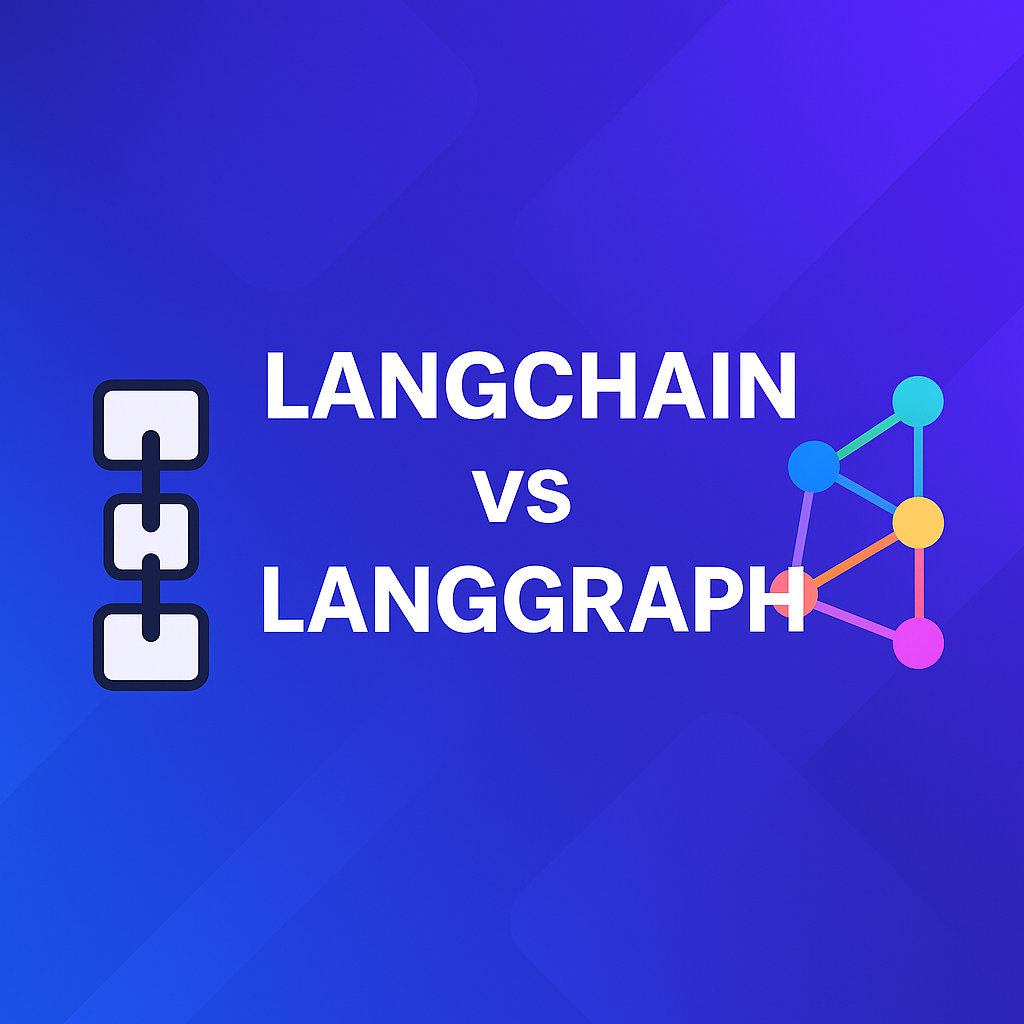LangChain and LangGraph – The Duo That Will Elevate Your AI Agent to the Next Level
Published: 2025-08-10
LangChain and LangGraph – The Duo That Will Elevate Your AI Agent to the Next Level
In the world of AI-powered applications, you can quickly reach the conclusion that simply "throwing a prompt at an LLM model" isn't enough. We need tools that allow us to connect language models with our own data, tools, and business logic.
This is where LangChain enters the scene, along with its younger brother – LangGraph.
🧩 LangChain – Building Blocks for LLM Applications
LangChain is a library that simplifies creating applications based on language models (LLMs) – such as OpenAI GPT or Claude.
It provides ready-made building blocks that you can use to assemble your own system.
Key LangChain features:
- Retrieval – searching for information from documents (e.g., PDF, databases)
- Chains – connecting multiple steps in a sequence (prompt → model → tool → result)
- Agents – LLM decides which tool to run
- Memory – conversation memory
If you want your model to:
- fetch data,
- process it,
- generate a response,
then LangChain gives you ready-made modules and integrations.
🔗 LangGraph – When Chains Aren't Enough
LangGraph is an extension of LangChain that allows you to think about data flow as a graph.
Instead of simple "step by step," you get nodes and edges that can create:
- branching paths,
- loops,
- parallel execution paths.
Each node can be:
- an LLM call,
- a tool,
- a conditional decision,
- or any logic written in code.
This is the perfect solution if your agent needs to dynamically make decisions or return to previous steps.
🔍 LangChain vs LangGraph – Quick Comparison
| Feature | LangChain | LangGraph |
|---|---|---|
| Structure | Sequential (chains) | Graph (any node arrangement) |
| Flexibility | Limited in complex workflows | High – conditions, loops, branching |
| Use Case | LLM integrations, RAG, simple agents | Complex agent processes |
| Dependency | Standalone | Built on LangChain |
| Difficulty Level | Easy start | Better for larger projects |
LEGO Metaphor:
- LangChain = blocks (LLM, agents, tools)
- LangGraph = instructions and blueprint for building something more complex
💻 Code in Practice
LangChain – Simple Chain
import { ChatOpenAI } from "@langchain/openai";
import { LLMChain } from "langchain/chains";
import { PromptTemplate } from "@langchain/core/prompts";
const model = new ChatOpenAI({
modelName: "gpt-4o-mini",
temperature: 0,
});
const prompt = new PromptTemplate({
template: "Give me an interesting fact about {topic}",
inputVariables: ["topic"],
});
const chain = new LLMChain({ llm: model, prompt });
const result = await chain.call({ topic: "space" });
console.log(result.text);
➡ One simple chain: prompt → model → response.
LangGraph – Graph with Decision Making
import { ChatOpenAI } from "@langchain/openai";
import { StateGraph, Node, Edge } from "langgraph";
const model = new ChatOpenAI({ modelName: "gpt-4o-mini" });
const askWeather = async (state) => {
const response = await model.invoke("What's the weather like in London?");
return { ...state, weather: response.content };
};
const checkIfSunny = (state) => {
return state.weather.includes("sunny") ? "sunny" : "not_sunny";
};
const sunnyNode = () => ({ message: "Let's go for a walk!" });
const notSunnyNode = () => ({ message: "We're staying home." });
const graph = new StateGraph()
.addNode("askWeather", askWeather)
.addNode("checkIfSunny", checkIfSunny)
.addNode("sunnyNode", sunnyNode)
.addNode("notSunnyNode", notSunnyNode)
.addEdge(new Edge("askWeather", "checkIfSunny"))
.addEdge(new Edge("checkIfSunny", "sunnyNode", "sunny"))
.addEdge(new Edge("checkIfSunny", "notSunnyNode", "not_sunny"));
const finalState = await graph.run({});
console.log(finalState.message);
➡ Here we have decision-making – depending on the weather, we choose a different path.
🎯 Summary
- Start with LangChain if you're building a chatbot, RAG, or simple agent.
- Reach for LangGraph if your system requires complex logic, loops, branching, and dynamic decisions.
- Think of it this way: LangChain provides the tools, LangGraph is the way to connect them into a living, flexible system.
